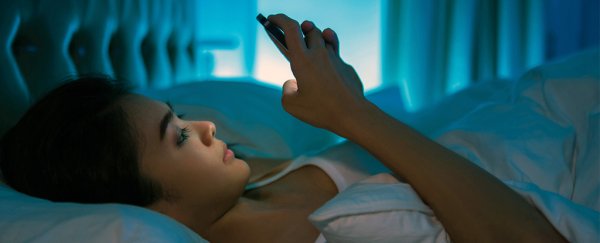At the turn of the 20th century, influential German psychiatrist Emil Kraepelin noticed a curious pattern among his patients. Some liked to rise early and go to bed early, while others found they were more productive if they stayed up late and slept in the next day.
Drawing on years of systematic clinical research, psychological experiments and sleep studies, he and his students were the first to describe what has now become a near-universal concept: there exists in this world a division of night owls and morning people.
Today, we call these two preferences chronotypes, but recent evidence suggests there are at least two more.
While most people fall on either side of this 'morningness-eveningness' spectrum, a large-scale survey has now identified a couple further categories that exist somewhere in-between.
Not exactly a morning type or an evening type, the "napper" and the "afternoon" type are their own special breed, the study authors suggest.
Afternoon-ers are generally sleepy in the morning and the evening, with their alertness peaking somewhere between noon and evening. On the flip side, nappers are generally sleepy from 11 am to 3 pm, and wakeful in the mornings and evenings.
Psychologists have been trying to tease out the complexities of this spectrum for years, and there is a growing body of evidence that suggests there are three or even four main chronotypes among humans.
While the results of these past studies have shown significant differences among these groups, the new study differs in that it finds these patterns before participants are categorised - and without applying separate morning and evening scales.
The results were gathered using online responses from 1,305 people, the vast majority of whom were female and relatively young.
Providing basic career and personal information, participants completed six questionnaire tools designed to determine a person's basic morning-evening preference, their circadian rhythm, their quality of sleep, and their predicted wakefulness at random times throughout the day (on a scale of "extremely sleepy" to "extremely alert").
Further, each of these questions assumed a normal night's sleep and a wake-up time of 7:30 am.
Using statistical analyses, the researchers sorted these responses into four broad chronotypes with their own daily variations in sleepiness.
"One can unmistakably recognise the division of study participants into morning, evening, and two further types," the authors write in their paper.
While some psychologists have predicted a hyper-alert, full-day chronotype, the new study didn't find evidence for this. In post-industrial societies, the authors argue, the majority of people fall into one of the four distinct chronotypes mentioned above, with only 30 percent of participants evading categorisation.
"As many as 631 participants were identified as having either morning or evening patterns," the authors note, "… and 550 as belonging to either afternoon or napper types [..] Among them 637 were assigned to only one distinct chronotype (morning or evening or afternoon or napper type)."
As revolutionary as the research might appear at first, it does come with some major limitations and caveats. One of the biggest ones is the absence of data comparing subjective and objective sleepiness. Another is the unequal representation of age and gender.
As such, the authors admit that further research will need to verify these four distinct sleepiness curves and figure out what biological, genetic, psychosocial, or environmental factors might influence their development.
Studies have shown, for instance, that night owls can resist their natural circadian rhythms to make mornings easier, but could the same thing work for afternoon-ers?
The literature on other chronotypes is scarce and the results varied; but as we are beginning to see, they are far more common than we once thought.
The research was published in Personality and Individual Differences.
